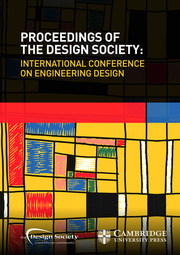Article contents
Interpretations of Design Thinking Across a Large Organization
Published online by Cambridge University Press: 26 July 2019
Abstract
Design thinking has a prominent role as established corporations ramp up innovation efforts focusing on user needs. Current literature provides a plethora of definitions for design thinking with variations in tools, methods and cultures. This study aims to identify differences in perception and maturity of design thinking across different contexts within a large corporation. The results are based on a thematic analysis of nine semi-structured interviews with industrial and user experience designers in the case company, operating in different countries and three different organizational contexts: lone designers of a region, unit-embedded design team managers and global-level design managers. The results echo the literature in finding no uniform definition of design thinking. Instead, it was seen as a continuous scale of practices, cognitive approaches and mindsets aiming for stronger user-centrism in the organization. Practices and maturity varied between contexts, indicating that to strengthen the role of design in an organization, a deep understanding of the context is crucial for a successful implementation.
- Type
- Article
- Information
- Proceedings of the Design Society: International Conference on Engineering Design , Volume 1 , Issue 1 , July 2019 , pp. 3929 - 3938
- Creative Commons
- This is an Open Access article, distributed under the terms of the Creative Commons Attribution-NonCommercial-NoDerivatives licence (http://creativecommons.org/licenses/by-nc-nd/4.0/), which permits non-commercial re-use, distribution, and reproduction in any medium, provided the original work is unaltered and is properly cited. The written permission of Cambridge University Press must be obtained for commercial re-use or in order to create a derivative work.
- Copyright
- © The Author(s) 2019
References
- 1
- Cited by


